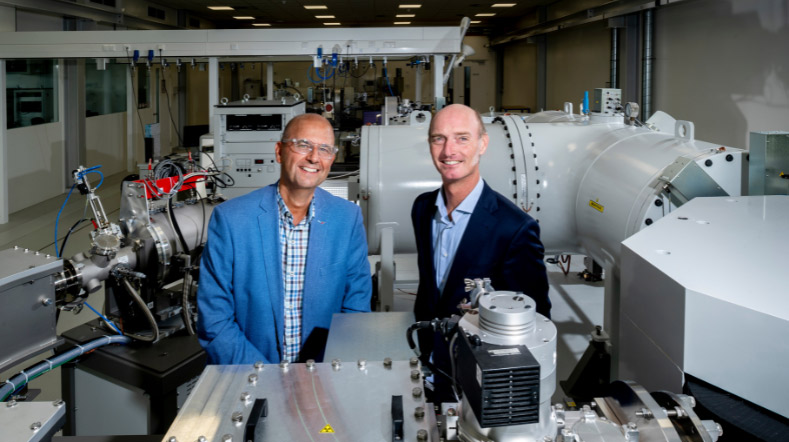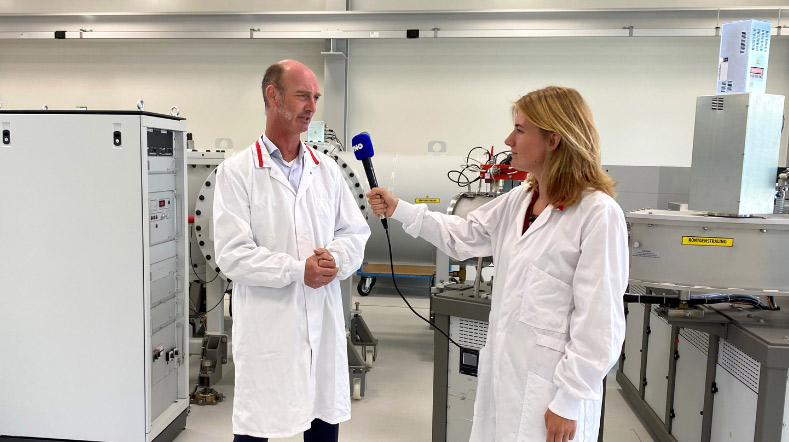
Innovating drug development for better healthcare
Microtracers are causing a paradigm shift in drug development, proving to be vital in accelerating and de-risking the process, and ultimately advancing healthcare and improving patient outcomes. The technology is already being embraced and applied to answer complex challenges related to analytical sensitivity, selectivity, or incomplete understanding of metabolism. Together with strategic partners, TNO is continuing to pioneer novel approaches and innovative technologies to help the pharmaceutical and biotech industries into the future.
What is microtracing?
In broad terms, microtracer technology clinically applies negligible amounts of radioactive material, mostly 14C-labelled, to obtain information of the radiolabelled entity or its derivatives. This reduces safety risks and ethical concerns, expediting clinical trial execution and trial approval. Combining microtracing with AMS offers huge benefits, as it deducts up to two years from the drug development process and provides valuable data richness for informed decision-making.
TNO has optimised the process through the years, for instance by developing a sample preparation technology to enable the detection, identification and quantification of all human metabolites in clinical phase 1. In the meantime, acceptance by industry is growing for the microtracer approach that is now also transferred to Peregrion, the latest spin-off company of TNO.
Biologics and AMS microdosing
TNO recently reached a critical milestone with the first-ever clinical microdosing study of the human enzyme RESCuing Alkaline Phosphatase (hRESCAP). The study of this biologic demonstrated the safety of using a microdose of a 14C-labelled protein in initial human trials. Importantly, microdosing and detection with AMS studies provide reliable pharmacokinetic (PK) data even for biologics without target-mediated disposition.
Accelerator Mass Spectrometry (AMS), microdosing, and microtracers are emerging as highly promising options. These techniques allow us to gain deeper insights into drug behaviour at therapeutic levels. By leveraging these tools, we can substantially accelerate and improve the overall drug development process.
If you’d like to discover how a microdosing and microtracer AMS can accelerate your programmes, our experts are here to help.
Generating clinical data for vulnerable populations
Clinical research on vulnerable populations, for instance paediatric patients and pregnant or lactating women, presents unique challenges as the limited data availability complicates safe and effective drug dosing. But new modelling and simulation techniques are making progress. Microdosing and microtracer studies using accelerator mass spectrometry offer promising avenues to enhance drug development for these groups.
By generating clinical data safely, we can refine and validate models and improve drug recommendations and dosing protocols. Ultimately, this concise and innovative approach offers drug developers essential data to aid patients in vulnerable population groups earlier, safer, and more effectively.
Together with national and international partners, TNO recently concluded proof-of-concept microdosing and microtracer technique studies in paediatric patients. TNO successfully generated mass balance data for midazolam and paracetamol – also in infants younger than two months old –, explored metabolic pathways, and obtained absolute bioavailability information. The studies revealed that the applied dose is completely safe for every age group, that drug metabolism differs across age groups, and that there is a strong correlation between microdose results and therapeutic doses.
Based on our paediatric study data, the FDA published a guidance document in 2022 allowing the use of microdosing studies in neonates to derive PK and metabolism information. Want to read our reports or learn more? Contact us.
Microtracers and drug efficacy testing: probing endogenous pathways
The main approach since introducing AMS in life sciences has been to dose humans with radiolabelled drugs to study their pharmacokinetic behaviour, excretion routes and metabolism. Together with our colleagues at BMS, TNO recently reported that microtracers are an effective surrogate for efficacy. TNO is continuing to make important strides to surpass labelling the drug itself, by probing drug-targeted pathways in vivo to establish target engagement in early clinical development.
Many drugs in development will influence important metabolic pathways in the human body in order to attain the desired outcome. Some can alter pathways that are normally under strict metabolic regulation. Fluxes, which are more sensitive markers for endogenous pathways because of homeostatic control and feedback loops, can only be measured using isotope technology.
The abundance of 13C disqualifies this isotope for non-perturbing isotope interventions in clinical research. TNO is using microtracer pathway probing with 14C-labelled substrates and AMS technology. TNO is currently developing this yet unexplored field of biomarker fluxes in cooperation with partners from the pharmaceutical and biotech industry.
At TNO, we are always seeking industry stakeholders to partner with us in enabling microtracer technology to reach its full potential. If you are interested, contact the team at TNO or at Peregrion.
Get inspired
Preclinical ADME


TNO launches Peregrion to boost market impact of its technology that accelerates medicine development


PPP uncovers new insights into MASLD development


Translational preclinical efficacy models


Time setters: reduce long waits for new medication with AMS



